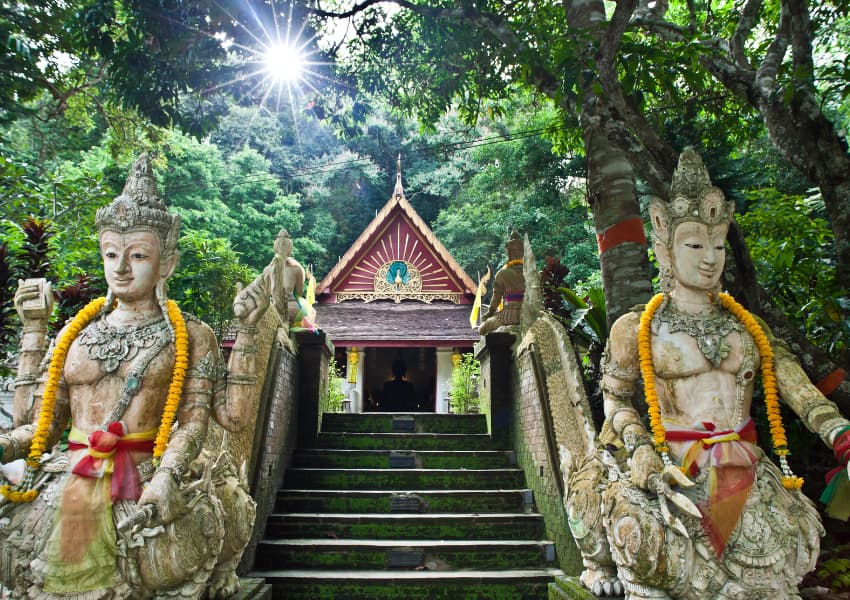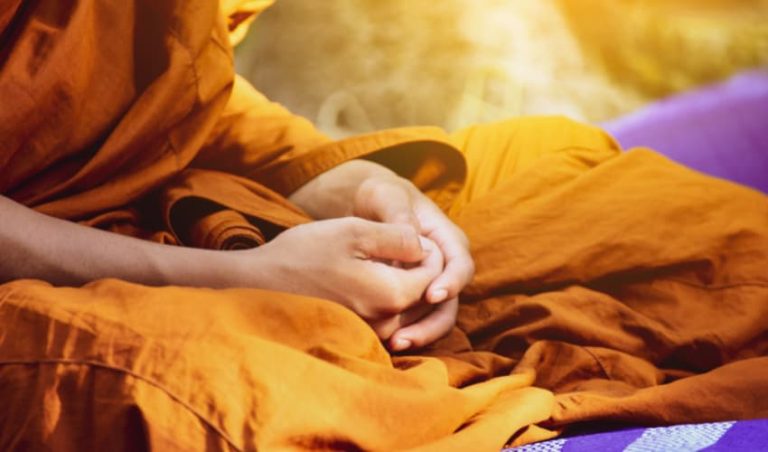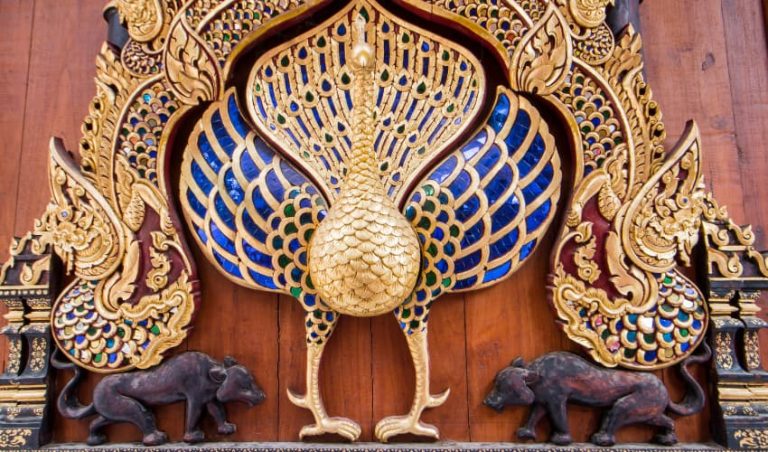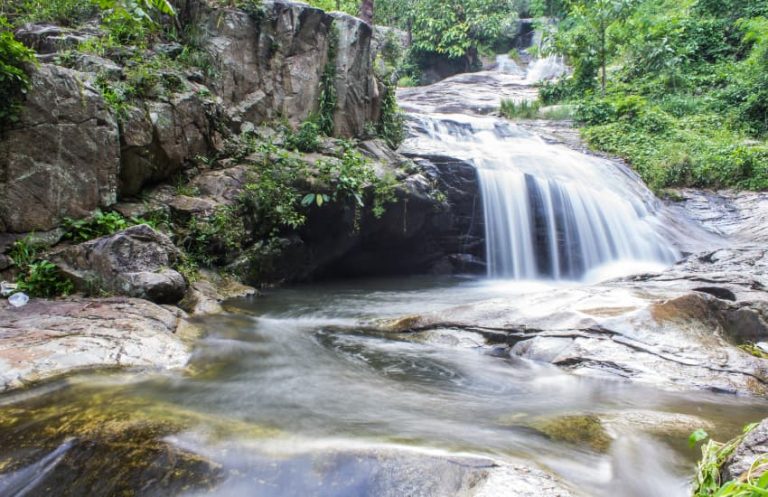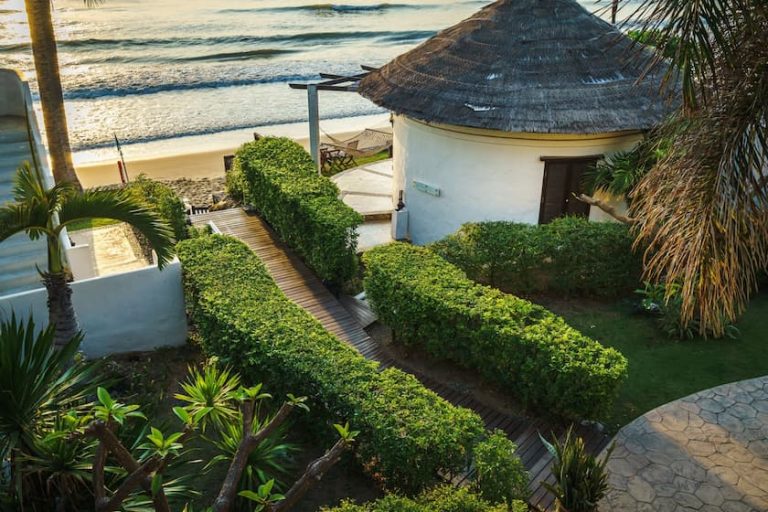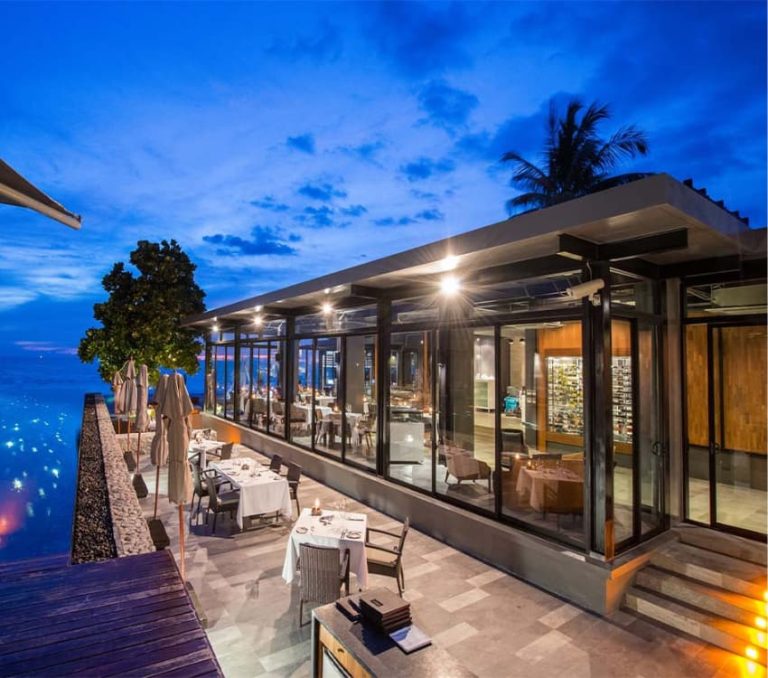If it’s hidden gems you’re after, visiting Wat Pha Lat in Chiang Mai will help you tick that box. This Buddhist temple is off the beaten track, set among natural vegetation in the peace of the Chiang Mai countryside and a far cry from those temples located more centrally in the city.
Loosely translated, Wat Pha Lat means “Temple on the slanting rock”, so the fact that it’s located in a mountainous landscape should come as no shock to visitors.
While getting there by car will take less than 20 minutes, this temple offers a unique access opportunity via a 2km hiking trail through the lush, forested landscape surrounding Wat Pha Lat.
The Monk’s Trail
Aptly named, this jungle trail has for years been the route that monks follow between Wat Pha Lat and the city to collect alms in the morning. The trail starts at the end of Suthep Road, and while not a challenging route, it is predominantly uphill and can be tricky underfoot in parts. Bright orange strips of fabric tied around trees demarcate the way and provide easy markers for hikers to follow.
The hike up to the temple should take between 30 and 45 minutes. The pathway is relatively worn, giving you a good indication of just how many feet have traversed this section of the jungle through the years. Although there are no majorly exciting sights along the way, you may pass by some pretty waterfalls, their size depending primarily on the amount of recent rainfall in the area. Trekking through this authentic northern Thai vegetation and experiencing the sights and sounds of nature provides a level of peace that you will be glad to have experienced.
As you emerge from the trail to the temple site, a bird’s eye view of Chiang Mai stretches before you and will make having conquered that uphill trail worthwhile. Many hikers continue their trek further uphill, eventually stopping at Wat Phra That Doi Suthep, but a rest stop to view Wat Pha Lat is highly recommended.
The History of Wat Pha Lat
We can trace the history of Wat Pha Lat back to around the middle of the 14th century. King Kuena was transporting Buddhist relics to the top of the Doi Suthep mountain on his white elephant, but it collapsed, and he died there. The king commanded that a temple be built where his precious elephant had passed away and at each point where it stopped to rest. One of those resting places happened to be the site of Wat Pha Lat.
It became common for monks to make the arduous journey from Chiang Mai to Wat Phra That Doi Suthep, a revered Buddhist temple on the Doi Suthep mountain. Wat Pha Lat became a popular resting place on this pilgrimage, and monks would stop there to rest, recharge and meditate before continuing.
In the mid-twentieth century, a road was built leading from Wat Pha Lat to Wat Phra That Doi Suthep making the strenuous journey for monks between the two temples infinitely more straightforward and quicker. As a result, Wat Pha Lat became less of a resting place and more of a site for meditation and introspection, as well as a monks’ residence.
The Temple Buildings and Grounds
As we have come to expect from jungle temples in Thailand, Wat Pha Lat blends seamlessly into its natural environment. And, over time, nature has encroached on the temple buildings, with tree roots and vines intertwining with these manmade structures and becoming a living element of the temple itself.
The Monks’ Trail emerges at the lower end of the temple complex. A long staircase on both sides with a white-painted serpent leads you to the start of the various temple buildings. These include a viharn, several pagodas, and stupas constructed mainly from wood and stone. While smaller and less extravagant than many other Chiang Mai temples, they are just as significant and impactful.
The understated nature of the buildings is a refreshing change from the golden, gilded and fancily adorned temples in other parts of Chiang Mai. A giant Buddha statue stands at the main entrance to the temple grounds, welcoming all who visit. Intriguingly, an invitation to visitors to pray accompanies the figure and sets the peaceful tone inherent in this historic space.
Due to the slanting nature of the ground, there are plenty of steps around the temple buildings, but this also has the advantage of creating tinkling waterfalls and little streams after heavy rains. In addition, the hilly landscape creates small alcoves and caves in which you may find Buddha images and historical artefacts.
There is an element of organisation and landscaping within the temple grounds, but this is primarily modelled on the natural vegetation growth and flow and gives the garden the appearance of being wholly natural yet controlled.
Being a bit off the beaten track, Wat Pha Lat doesn’t attract the busloads of tourists and visitors that other more central temples do. This means fewer people fighting for the best viewing spot or the perfect background for a selfie. It also means less noise pollution in an essentially quiet environment and a more serene atmosphere to appreciate Wat Pha Lat’s beauty truly.
Wat Pha Lat FAQs
How can I get to Wat Pha Lat?
The temple is best reached by following the Monk’s Trail, a well-marked hiking path that starts near Chiang Mai Zoo. You can hire a taxi or use a rideshare app to reach the trail’s starting point.
How long is the hike to the temple?
The hike along the Monk’s Trail to Wat Pha Lat is about 1.5 kilometres, which takes 30-45 minutes, depending on your pace. The trail is relatively gentle, but it can be slippery after rain.
What should I wear when visiting the temple?
As with all Buddhist temples in Thailand, modest attire is required. This means covering your shoulders and knees. It is also recommended to wear sturdy shoes for the hike.
Is there an entrance fee?
There is no entrance fee, but donations are appreciated.
You can continue the hike up to Wat Phra That Doi Suthep from Wat Pha Lat. This is a steeper and longer part of the trail, so be prepared with plenty of water and sun protection.
What wildlife might I see on the trail?
The lush surroundings are home to various bird species and sometimes monkeys. Please remember to respect the wildlife and not feed any animals you encounter.
Can I witness any ceremonies or events at the temple?
Wat Pha Lat is a functioning monastery, so you may see monks going about daily routines. Always remember to respect their space and silence during meditation or prayer times.
Can I meditate at the temple?
Yes, Wat Pha Lat is known for its serene environment, making it an excellent place for meditation. Always be respectful of others who may be meditating or praying nearby.
Related Articles
- Seven Chiang Mai Temples Worth A Visit
- Wat Umong Suan Phutthatham
- Wat Suan Dok
- Bhubing Palace
- Wat Ram Poeng
Aleenta Retreat
Chiang Mai
Chiang Mai
189 Soi Ban Mai Lang Mo 18,
Suthep, Muang Chiang Mai District,
Chiang Mai 50200
T: +66 (0)52 090 333

